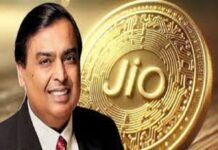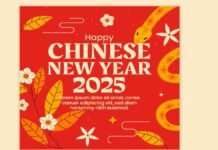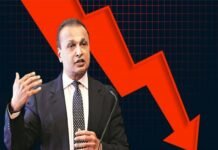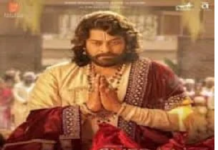
Introduction
India’s democracy thrives on the vibrancy of its electoral process, empowering citizens to shape governance at every level. Since independence, over 400 elections to the Lok Sabha and State Legislative Assemblies have underscored the Election Commission of India’s commitment to fairness and transparency.
However, the split and frequent nature of elections has sparked debate about the need for a more efficient system. This has renewed interest in the “One Nation, One Election” concept, a proposal to synchronize electoral cycles.
In India, the term “Jamili election” refers to an electoral system that involves holding elections at the national, state, and local levels of government. By coordinating voting cycles, this model aims to promote efficiency and integrity in the political system and expedite the democratic process.
This idea, also known as simultaneous elections, seeks to align the election timelines of the Lok Sabha and State Assemblies, allowing voters to cast their ballots for both on the same day in their constituencies.
Although voting could occur in phases across the country, this approach promises to reduce logistical challenges, reduce costs, and minimize disruptions caused by frequent elections.
The 2024 report by the High-Level Committee on Simultaneous Elections, led by former President Ram Nath Kovind, has provided a roadmap for implementing this vision.
With the Union Cabinet’s endorsement, the concept has emerged as a fundamental of potential electoral reform, necessitating thoughtful deliberation and consensus to streamline India’s governance and democratic processes.
Historical Background
The idea of simultaneous elections is not new to India. Following the adoption of the Constitution, the first general elections in 1951-52 were held simultaneously for the Lok Sabha and State Assemblies. This synchronized cycle continued for three subsequent general elections in 1957, 1962, and 1967.
However, the cycle was disrupted in 1968-69 due to the premature breakdown of some State Assemblies and the Lok Sabha’s early breakdown in 1970.
Subsequent disruptions and emergency-induced term extensions further derailed synchronization, resulting in disorganized election schedules across the country.
While a few Lok Sabha terms, such as the Eighth, Tenth, Fourteenth, and Fifteenth, lasted the full five years, many others ended prematurely. Similarly, State Assemblies have witnessed frequent dissolutions, leading to a pattern of fragmented electoral timelines.
High-Level Committee on Simultaneous Elections
In 2023, the Government of India constituted the High-Level Committee on Simultaneous Elections, chaired by former President Ram Nath Kovind. Its primary mandate was to evaluate the feasibility and implications of simultaneous elections for the Lok Sabha and State Assemblies.

Key Findings and Recommendations:
- Public Opinion:
-
- Over 21,500 responses were received, with 80% supporting simultaneous elections.
- Responses were geographically diverse, with strong support from Tamil Nadu, Maharashtra, Karnataka, Kerala, West Bengal, Gujarat, and Uttar Pradesh.
-
Political Party Responses:
-
- Of the 47 political parties consulted, 32 supported the idea, citing resource optimization and social harmony.
- 15 parties raised concerns about potential anti-democratic effects and the marginalization of regional parties.
-
Expert Consultations:
-
- Former Chief Justices, Election Commissioners, and legal experts largely supported the proposal, emphasizing the benefits of reducing socio-economic disruptions caused by frequent elections.
-
Economic Impact:
-
- Business organizations, including CII, FICCI, and ASSOCHAM, highlighted the economic advantages of simultaneous elections, such as reduced disruptions and enhanced stability.
-
Legal and Constitutional Changes:
-
- Amendments to Articles 82A and 324A of the Constitution were recommended to enable simultaneous elections.
-
Phased Implementation:
-
- Phase 1: Synchronize Lok Sabha and State Assembly elections. (One Nation One Election)
- Phase 2: Align elections for Municipalities and Panchayats with Lok Sabha and Assembly elections within 100 days.
-
Electoral Roll and EPIC Harmonization:
-
- The report recommended a Single Electoral Roll and Single EPIC for all levels of government to reduce duplication and errors.
-
Public Sentiment on Frequent Elections:
-
- The public expressed concern about voter exhaustion and governance disruptions caused by frequent elections, which could be alleviated through synchronization.
Justification for Dual Elections One Nation One Election
- Consistency in Governance:
-
- Frequent elections divert political focus from governance to electioneering. Synchronization would allow governments to prioritize developmental policies and public welfare.
- Policy Stability:
-
- Frequent imposition of the Model Code of Conduct (MCC) disrupts routine administration. Simultaneous elections would reduce such disruptions, ensuring smoother policy implementation.
- Efficient Resource Utilization:
-
- Simultaneous elections would minimize the diversion of manpower and resources for election duties, allowing officials to focus on their core responsibilities.
- Preservation of Regional Voices:
-
- Compared to fears, simultaneous elections would enable regional parties to highlight local issues during campaigns without being overshadowed by national narratives.
- Equitable Political Opportunities:
-
- By consolidating election timelines, simultaneous elections would create a level playing field, fostering leadership diversity within political parties.
- Focus on Development:
-
- Synchronization would reduce the prolonged focus on election-related activities, enabling a stronger commitment to governance and developmental priorities.
- Cost Reduction:
-
- Consolidating elections would significantly lower expenditures on logistics, security, and personnel, ensuring better fiscal management and economic stability.







































